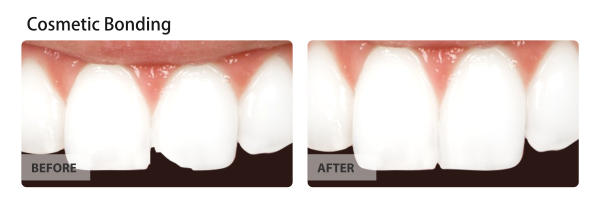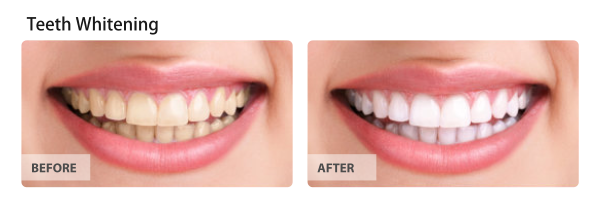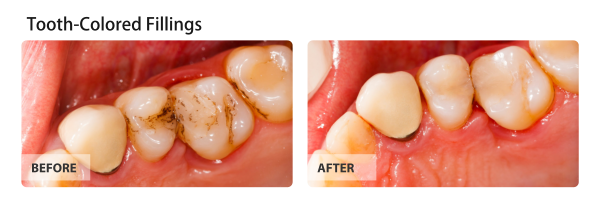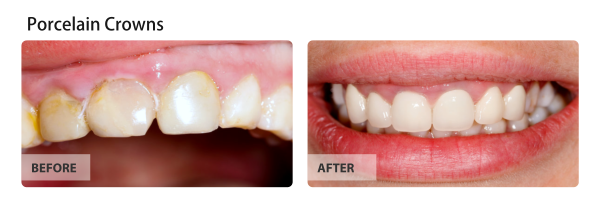Hello world!
Welcome to WordPress. This is your first post. Edit or delete it, then start blogging!
According to the American Academy of Cosmetic Dentistry, nearly 100 percent of Americans believe that a beautiful smile is an important social asset. Your smile is the first impression that others have of you, so why hide it? Cosmetic tooth whitening from Zoom makes it possible for you to whiten your teeth to a beautiful, natural shade of white in as little as one hour. Zoom is an in-office professional tooth whitening treatment that combines a proprietary whitening solution with a specialized light that helps remove surface stains and yellowing. Because the treatment is performed under professional supervision, the solution and treatment time can be adjusted and customized to fit patient needs.
Did you know…that Zoom tooth whitening has been the choice of more than 10 million people? In fact, Zoom is the most requested professional whitening system in America. In just an hour, patients can achieve better results than are available with over-the-counter whitening treatments that can take several weeks to complete. With Zoom patients get long-lasting, brilliantly white results that are unavailable with conventional whitening treatments. |
Frequently Asked Questions
Do I need Zoom teeth whitening?
Teeth whitening is a cosmetic procedure used to enhance the appearance of the teeth and remove stains on the enamel and in the dentin. If you long for a whiter, brighter smile, Zoom teeth whitening could be right for you. Zoom is only available through dentists, so contact our dentist for more information about using Zoom to get the smile you’ve always dreamed of having.
What should I expect during my Zoom teeth whitening treatment?
If you and your dentist determine that you are a candidate for Zoom teeth whitening, you will first need to schedule an appointment to have your teeth cleaned. Once they are free of plaque and tartar, your dentist will place protective coverings over your lips and gums. The Zoom whitening gel will then be applied to your teeth for 15 minutes and a light placed over it to activate the gel. This cycle may be repeated up to four times, after which time your teeth may be lightened by as many as 6 to 10 shades.
Will I need to follow any at-home care instructions after I complete my Zoom teeth whitening treatment?
Yes. To maintain your whitening treatment results, you’ll need to avoid drinking highly pigmented beverages like red wine and coffee, as these can stain your teeth. You may also wish to switch to a whitening toothpaste that will help remove stains that can accumulate each day. If you receive a Zoom at-home touch up kit, use it to maintain your results according to your dentist’s instructions.






Dental implants are surgical-grade root devices that support permanent tooth prosthetics that are manufactured to last a lifetime. These artificial roots are anchored in the bone beneath the gums where they become fused into the jaw. A crown is mounted atop the implant for a long-lasting and natural looking smile. Many dentists and patients prefer dental implants because they offer the same function as natural teeth and also help prevent bone atrophy in the jaw. Dental implants may be used to replace a single missing or damaged tooth or to restore an entire smile.

Did you know…that approximately 30 million people live with no natural teeth in one or both jaws? But more and more dental patients are opting for dental implants as a means of tooth replacement. The American Academy of Implant Dentistry reports that 3 million people currently have dental implants – a number that is rapidly growing by about 500,000 per year. Modern titanium implants were first developed in the 1950’s, but archeologists have determined that ancient Egyptians and Mayans were the first cultures to implant artificial teeth. |
Frequently Asked Questions
Are dental implants right for me?
You may qualify for dental implants if you have missing, broken or severely decayed teeth and are in relatively good overall health. The only way of determining your eligibility for implants is to consult with an oral care provider to identify whether you have adequate bone support and healthy gums that will support the new tooth structure.
What should I expect if my dentist and I decide dental implants are right for me?
The placement of dental implants is a multi-step process that typically takes between 6 and 9 months to complete. It begins with a surgical procedure during which a titanium rod is placed where a previous natural tooth root once was. The gums are sutured shut over the implant, where is will stay for several months while it heals and begins fusing with the surrounding bone. Due to the nature of implant placement and its average procedure time of between 1 and 2 hours, you’ll be sedated and/or anesthetized for the duration of the treatment. At the conclusion of the healing period, you’ll return to be fitted for permanent crowns and have them placed.
What type of post-treatment care will I require?
It is normal to experience some discomfort, including bruising and swelling following a dental implant procedure. However, inflammation and pain may be managed with over-the-counter medications, hydrocodone, or codeine. You may be asked to eat only soft foods for approximately 2 weeks until the surgical site heals.
Dental crowns and bridges are custom-fitted tooth prosthetics that are used to replace or restore damaged or missing teeth. Crowns – also known as caps – are fixed over the surfaces of natural tooth structures or dental implants. Bridges are used to fill in the gaps left by missing teeth and are anchored in place by the natural teeth or crowns nearest the empty space. Both crowns and bridges are non-removable and must be cemented in place by a licensed dentist. Patients who get crown or bridges to restore their smiles achieve both the function and appearance of natural, healthy teeth.

Did you know…that the Etruscan civilization were the first to use crowns as a means of restoring damaged teeth? In fact, the materials they used – ivory, gold, and bones – were still the standard in dentistry as recently as the 20th century, when porcelain crowns were first invented. Today, crowns and bridges are customized specifically for the patient’s bite and can usually be placed in as little as one or two dental visits. With proper cleaning and regular dental check-ups, crowns and bridges can last many years, or even a lifetime. |
Frequently Asked Questions
Is a crown or bridge right for me?
If you have a tooth that is damaged or decayed, but still intact, a dental crown may be right for you. If your tooth is missing, but its former position is surrounded by other tooth structures, a bridge may be the solution for you. Schedule an office consultation to determine whether you could benefit from crowns or bridges.
What should I expect when I have my crown or bridge placed?
If you are a candidate for a crown or bridge, your teeth will be reduced to ensure a proper fit. An impression will then be taken of your bite and used to fabricate a mold for the crown or bridge. If you are choosing porcelain prosthesis, its color will be matched to the natural shade of your other teeth. If a dental lab is making your crown or bridge, you may be fitted with a temporary restoration until the permanent one is ready for placement.
Do I need to follow any post-treatment care guidelines?
Your teeth will need time to heal following the crown and bridge placement process, so it is normal for you to experience some sensitivity – especially to hot and cold. Additionally, you may experience soreness in the gums surrounding your restorations, though this is usually manageable with ibuprofen and should subside within a few days.
Composite fillings – also known as tooth-colored fillings – are dental restorations designed to be inconspicuous and natural in appearance. They blend well with the teeth and appear more natural than amalgam fillings, which are darker and more easily seen by other people. Composite fillings are made of ceramic and plastic compounds that chemically bond to the teeth. They can be used to fill in decayed areas of the teeth, as well as to help repair chipped or broken teeth. Most dentists use composite restorations to treat the teeth closest to the front of the mouth, as they are more noticeable when patients smile. However, advancements in dental technology and the composition of composite fillings have made it possible for Auburn dentists to also use tooth-colored fillings on molars, which receive more wear than other teeth.

Did you know…that composite fillings allow dentists to preserve more of the natural tooth structure? This is because composite materials chemically bond to the surface of the tooth like an adhesive. The process takes slightly longer to complete than traditional amalgam fillings, but patients can preserve more of the natural portion of the teeth while enjoying a restoration that is discreet and understated. |
Frequently Asked Questions
Am I a candidate for tooth-colored fillings?
If you have a cavity, broken tooth, or a deteriorated filling, you may be a candidate for a tooth-colored filling. Schedule a dental consultation to find out if composites are right for you.
What should I expect if my dentist decides a composite filling is right for me?
During your visit, your gums and teeth will be anesthetized with a local anesthetic near the site of the filling. Once the area is numb, the decayed or damaged portion of your teeth will be removed to make room for the new tooth-colored filling. A resin will be placed over the area and cured with a hand-held light for less than a minute. The new filling will then be shaped and polished before the procedure is complete.
What type of post-treatment care is required after getting a composite filling?
Composite fillings are cured with light at your dentist’s office. You should be able to return to normal activity and oral care immediately after your visit. It’s normal for treated teeth to experience some sensitivity to hot and cold in the days following treatment, but sensitivity that persists beyond a week should be reported to your dentist.
Brushing your teeth is probably a standard part of your daily routine, but chances are you aren’t following the American Dental Association’s guidelines for cleaning your teeth properly. The ADA currently recommends that you brush your teeth at minimum of two times each day – preferably morning and night or anytime you eat foods that contain sugar. When you brush, your toothbrush should be tilted at a 45 degree angle to your gum line. As you brush, be sure to remove debris from every surface of the teeth – including the backs of the teeth, near the gum line, and on chewing surfaces. It is also important to brush your tongue, as bacteria can accumulate there and cause malodorous breath.

Did you know…that the type of toothbrush you use makes a difference in your oral health? The ADA recommends using a soft-bristled toothbrush with a head that is ergonomically proportioned to the inside of your mouth. Many patients erroneously believe that medium or hard-bristle toothbrushes are more efficient; but these brushes can actually cause abrasions to the teeth and gums, making them more vulnerable to decay. The ADA also recommends replacing your toothbrush about four times yearly or whenever the bristles become frayed. |
Frequently Asked Questions
Should I change my brushing habits?
You may need to change your brushing habits if you are experiencing signs of poor oral hygiene. Examples of common symptoms include bleeding or reddened gums, excessive plaque build-up, decaying teeth and receding gum lines. To find out if you are brushing correctly or if you need to change your brushing habits, make an appointment with your dentist for a full consultation.
What should I expect if I begin brushing my teeth correct?
The benefits of proper tooth brushing techniques may not be experienced immediately, but they are noticeable long-term. Over time, brushing too hard or not brushing enough can produce oral health complications that cannot be reversed and require special treatment. By adopting proper brushing habits, you could avoid expensive dental bills in the future.
Is there anything else I need to do in addition to brushing properly?
Yes. It is important that you also floss daily and use toothpaste that contains fluoride each day. You should also schedule dental exams and professional cleanings in at least twice per year.
Having bad breath can be an embarrassing problem – especially if you are regularly face to face with other people. Known professionally as halitosis, bad breath plagues many people every day. Most cases of bad breath can be remedied by efficiently brushing the teeth. However, some types of bad breath are chronic or recurring, which may warrant a visit to the dentist.

Did you know…that bad breath can be caused by something as simple as eating too much garlic, or that it could be a serious symptom of disease? Some of the most common causes of bad breath include dry mouth, certain medications, use of tobacco, poor dental hygiene, and oral infections. In rare cases, bad breath may be a sign of diseases like cancer or gastroesophageal reflux. |
Frequently Asked Questions
Do I need treatment for my bad breath?
If your bad breath does not improve despite self-care techniques, such as dietary adjustments and thorough tooth brushing, you may need to see a dentist about pursuing professional treatment. Keep in mind that short-term remedies like gum, breath mints, and mouthwash may temporarily freshen breath, but they are not a solution to the underlying problem.
What should I expect my dentist to do about my bad breath?
Your visit will begin with an examination and questions about your daily habits, such as the types of foods you eat and the medications you take. Your dentist may then inspect your mouth for signs of decay, infections or gum disease that could be causing your bad breath. If your chronic bad breath cannot be traced to an oral problem or daily habit, you may be referred to a physician for further evaluation.
Is there anything I can do to maintain better breath?
Yes. If bad breath is a source of embarrassment for you, try to keep breath fresheners on-hand at all times. Sleep with your mouth closed, as this prevents dry mouth and helps tame morning breath. Eliminate odor-causing foods from your diet, such as garlic and onions, and make an effort to brush your teeth and tongue every morning and night. Finally, be sure to visit your dentist for professional cleanings at least twice per year to remove built-up plaque that can cause chronic halitosis.




